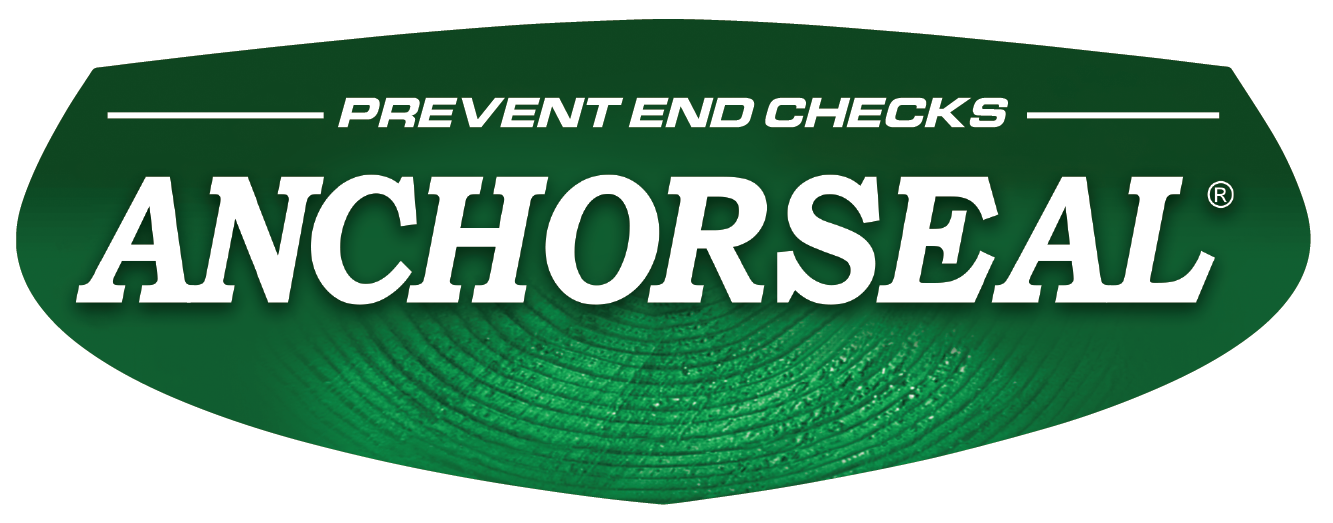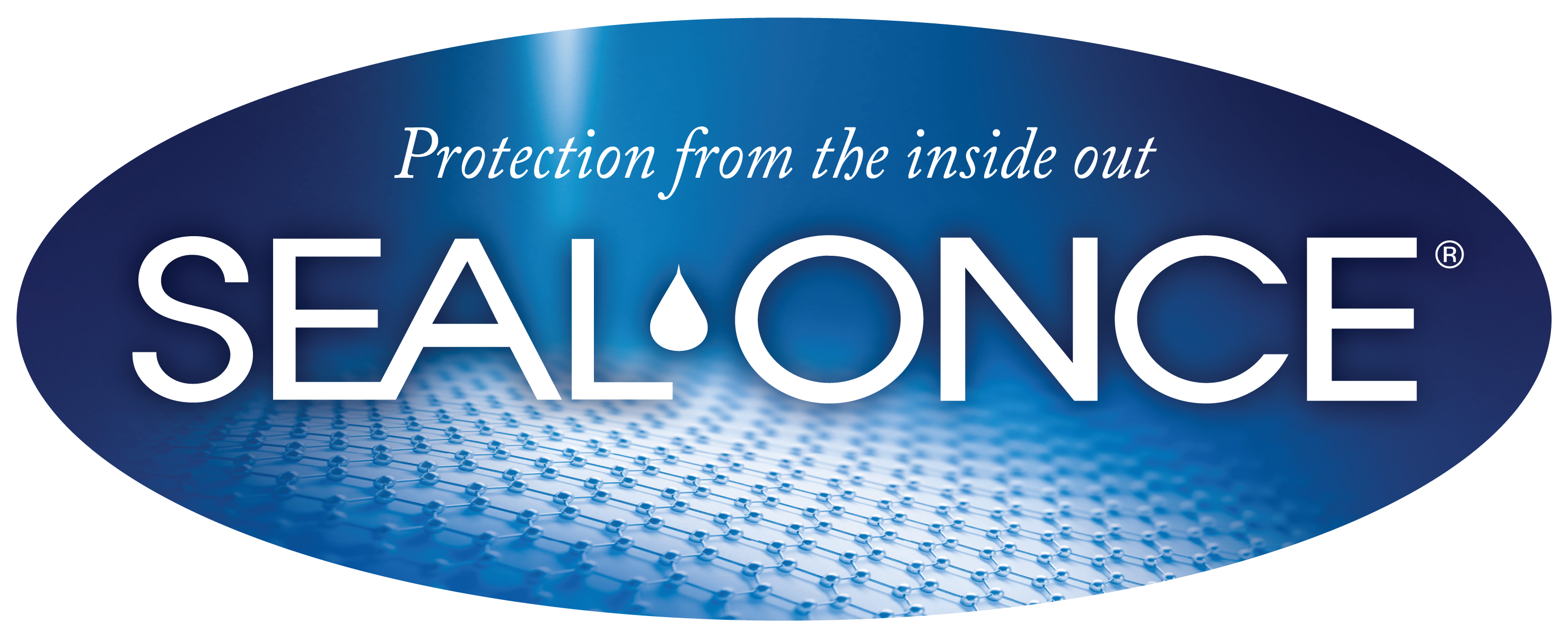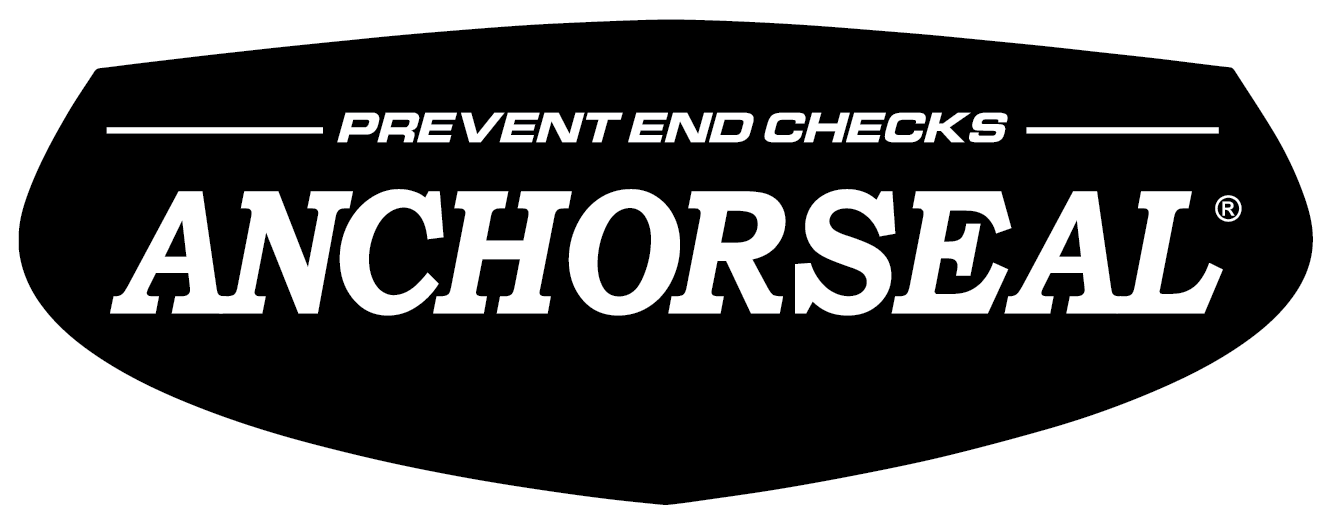Myth: I don’t need to end-wax in the winter.
Facts: End-checking through rapid-moisture loss from the end grain is still a costly problem during winter months.
- The same factors that cause end checking are still at play year-round.
- Brutal winter winds create excessive air flow, pushing dry air against wet freshly sawn wood, accelerating drying.
- Even though cold air cannot hold as much moisture as warm air, the relative humidity in cold winter months is similar to that of warm summer months. Wood will still seek to reach an equilibrium moisture content with the surrounding air.
- Because air drying is slower in winter months, longer air-dry times are required. Weather is still an uncontrollable variable.
- Temperatures can sometimes fluctuate greatly between day and night; thus, the risk of end-checking is also extended over a longer period of time.
Myth: There is no benefit to end waxing maple.
Facts: All lumber is prone to end-checking.
- Anchorseal has been proven to prevent 90% or more of end-checks in all species.
- Anchorseal has also been shown to reduce the length of end checks and splits that do develop.
- Using a recent average value of $1890/MBF for 4/4 SEL&Btr #1&2 White hard maple, every 1% of loss due to end-checking equals 10bf. Ft. of lumber per MBF at a value of$18.90/MBF.
- One gallon of Anchorseal, when properly applied,covers the ends of approximately 3 bundles of lumber or roughly 15-20 logs.
- When buying 55-gallon drums or larger, that equates to less than $2/MBF in end wax.
- Assuming it takes 5 minutes to end-wax a bundle of lumber for a laborer paid $12/hour, applying
- Anchorseal costs about $1/MBF in labor.
- For less than $3/MBF you can protect against greater losses in both hard and soft maple, as well as all other species.
BEST PRACTICES FOR USING ANCHORSEAL IN THE WINTER
- Do not let Anchorseal freeze! Freezing will break down the emulsion and spoil the product rendering it useless.
- Always buy Winter Formula when temperatures are near or below freezing. Our winter formula contains additives that lower the freezing temperature of the product and provide added freeze-thaw stability to protect the emulsion from separation in the event
that it freezes in transit or during storage. - Apply in a sheltered area. Anchorseal is water based and needs time to dry properly. If it is applied during cold temperatures in a windy open area, water in the product may freeze before it can evaporate. This can cause the product to flake off as the ice forms a layer between the wax and the wood.
- Clean snow and ice off of lumber or logs before applying. Similar to freeze-drying, snow and ice on the wood will form a barrier that does not allow the wax to properly set up on the wood.
- Keep hoses and spraying equipment off of the frozen ground. Freezing of Anchorseal in hoses can occur when hoses are not properly tended to. In the event a hose does freeze, flush with hot water to remove any frozen Anchorseal.
- Never add water to Anchorseal. Added water will not blend properly with the wax. Wax and water do not naturally mix. It is only under our strict manufacturing process that a strong and stable emulsion can be created. Added water will lower the percentage of wax per gallon, which will compromise protection and increase the risk of product freezing quicker.

Myth: I can save money by not end-waxing in the winter.
Facts: Simply stated, Anchorseal pays for itself all year. Lumber is valuable. Logs can be scarce. Margins are tight. Reducing yield loss in lumber and logs should be a prime consideration for any operation all year. Anchorseal has proven its value for reducing yield loss for over 30 years.
For more information about protecting valuable logs and lumber against end-checking, contact us at 1-888-END-COAT.














